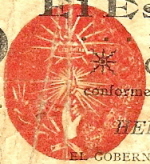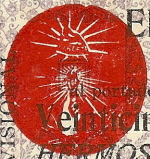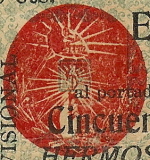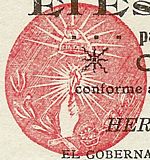5c notes of the Estado de Sonora
(This section is the result of research by Robert Perigoe. The information originally appeared in the March 2018 issue of the Journal of the U. S. Mexican Numismatic Association).
The 5c note is the first of the three issues that used the red state seals, bearing a hand holding a torch, usually referred to as hand seals or torch seals.
| from | to | Total number |
Total value |
|
| 5c | 1 | 100000 | 100,000 | $20,000 |
Apparently there were 25 print runs of 1,000 sheets, with four different print positions on a sheet: Position A (the Top), Position B (the Upper Middle), Position C (the Lower Middle) and Position D (the Bottom). Thus
0001 0002 0003 … 1000
1001 1002 1003 … 2000
2001 2002 2003 … 3000
3001 3002 3003 … 4000
4001 4002 4003 … 5000
5001 5002 5003 … 6000
6001 6002 6003 … 7000
7001 7002 7003 … 8000
to
96001 96002 96003 … 97000
97001 97002 97003 … 98000
98001 98002 98003 … 99000
99001 99002 99003 ..100000
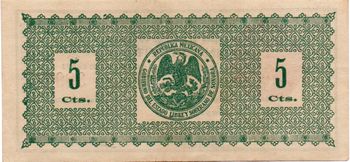
5c - Position A - Hand seal 2
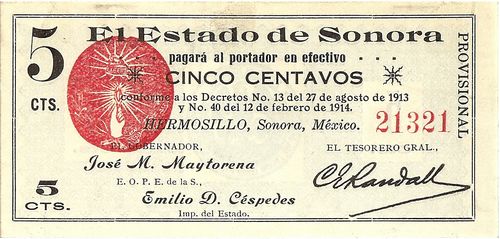
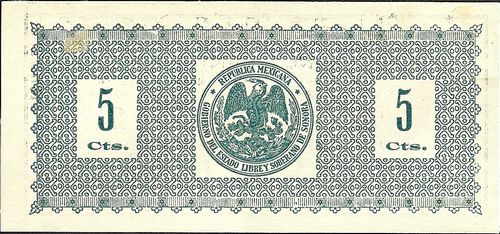 5c - Position B - Hand seal 3
5c - Position B - Hand seal 3
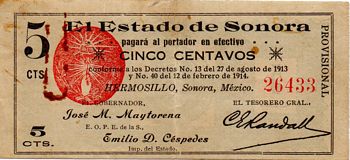
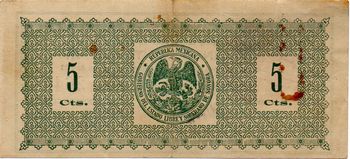
5c - Position C - Hand seal 4
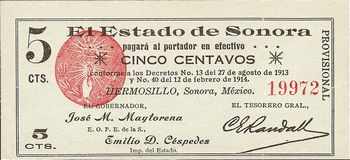
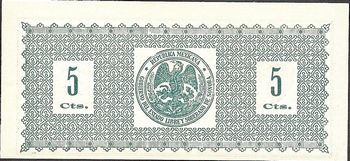
5c - Position D - Hand seal 5
Signature
The Randall signature is positioned differently relative to the corner on each of the four print positions. Examination of the space between the signature and the two frame lines is the key. A rule of thumb is to say the signature clears the frame line if the space between the two would accommodate another line of the same thickness, and to say the signature almost touches the frame line when it may be too close to call, but there is certainly not enough room to squeeze in another line between them. In Position A the signature clears both frames. In Position B it almost touches both frames. In Position C it almost touches the right frame, but clears the bottom. In Position D it clears the right frame but almost touches the bottom.
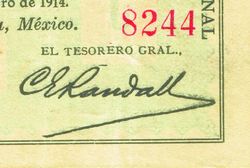 |
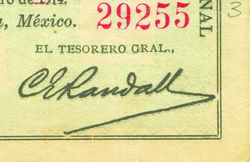 |
|
| Position A | Position B | |
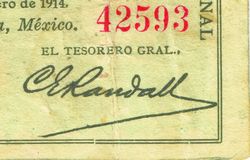 |
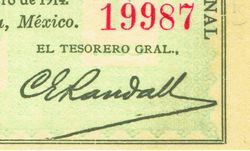 |
|
| Position C | Position D |
Background
Another foolproof way to identify the four positions is to examine the background printing. For decades these peculiar cross patterns have enabled (or plagued) any detailed study of the many issues of typeset Sonoran postal stamps or fiscal stamps of the revolution. The pattern of the crosses is clearly set out in Follansbee’s workNicholas Follansbee, The stamps of the Mexican Revolution 1913-1916, Collectors Club of Chicago, Chicago, 1996 “The type elements composing the background show an X surrounded by four little circles, one of which is further from the centre than the other three. In the settings given below, each type element is referred to by its orientation.”
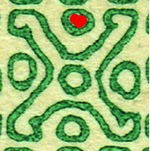 |
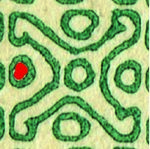 |
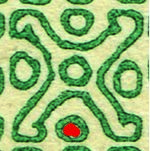 |
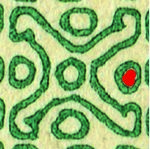 |
|||
| Type T | Type L | Type B | Type R |
These crosses are found in the background of the reverse sides of these notes. In all four positions, every cross is typically type B. In Position A, there is no exception to the pattern.
However, in the next three positions, there is one exception each time. In Position B, in the third row from the top, second column from the right, the cross is is type L.
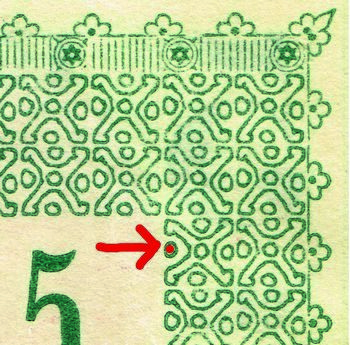
In Position C, in the top row, second column from the left, the cross is type R.
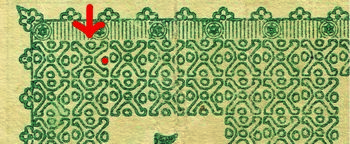
In Position D, in the bottom row, seventh column from the right, the cross is type R.

Hand seals
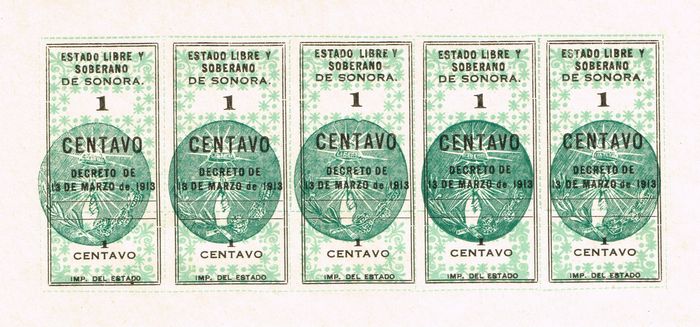
The five different hand seals are shown above. The images on the stamps are considerably clearer than those that appear on the currency, which tend to be too heavily inked to show detail. (It is interesting to note that there were also some large swaths of over-inking on the red mountain seals in Series 4 of the five peso notes printed later on.) It is not unusual to be satisfied with identifying the outer shape of the seal, if there is a bump or a notch. Some other differences that may be discernible include the shape of the shadow of the fingers on the hand, the shading on the ribbon at the bottom, or the shape of the leaves on the laurel branch at the left.
Hand seal Type 2 is found in Position A, Type 3 in Position B, Type 4 in Position C, and Type 5 in position D. However, they are typically far too hard to distinguish to be of much use in determining the print position.
In summary, the four positions can be distinguished thus:
| Position | Hand Seal Type |
Randall Signature | Type B Background crosses on reverse |
| A | 2 | Easily clears both frames | No exception |
| B | 3 | Almost touches both frames | One exception, 3rd row from top, 2nd from right is Type L |
| C | 4 | Almost touches right frame | One exception, top row, 2nd from left is Type R |
| D | 5 | Almost touches bottom frame | One exception, bottom row, 7th from right is Type R |

